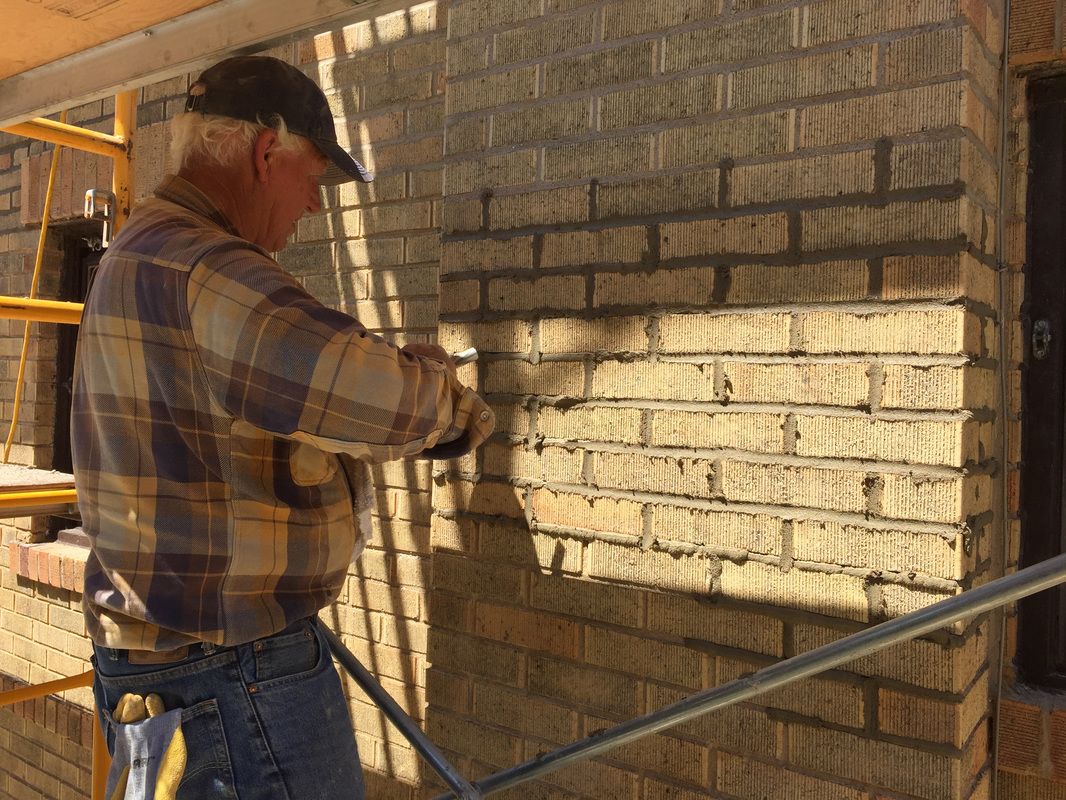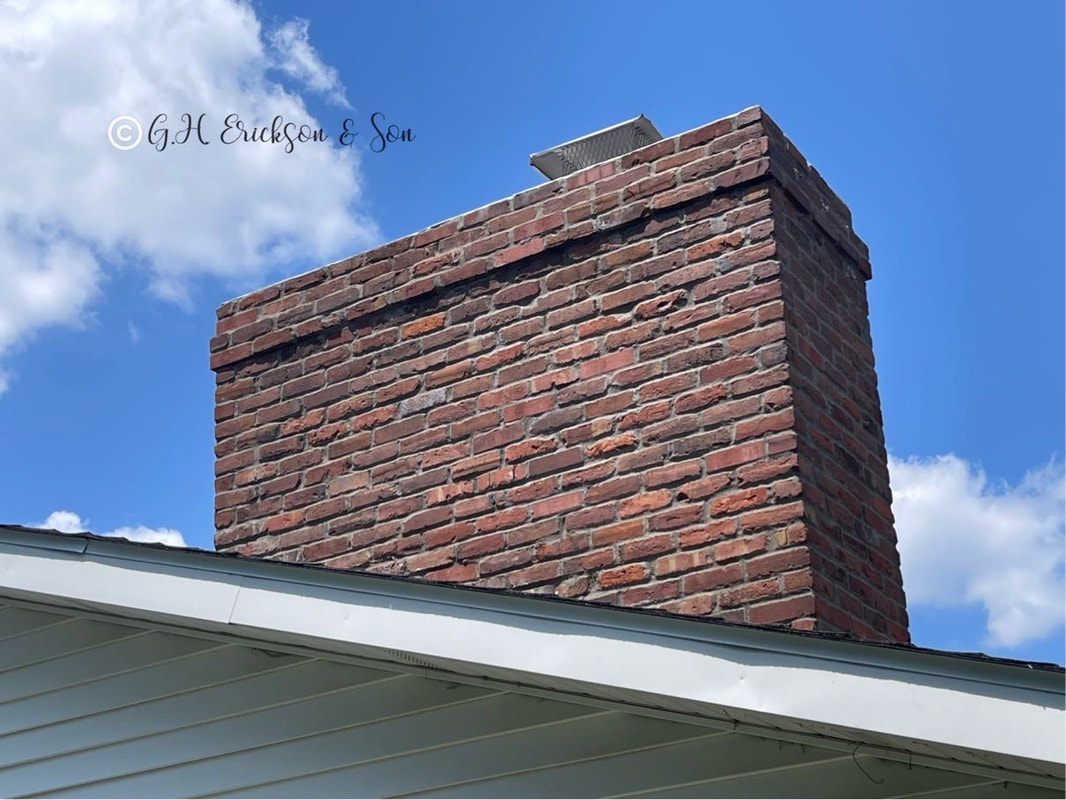Tuck Pointing
If you are a proud homeowner, you know that maintenance is key to keeping your property looking great and functioning well. One area that often gets overlooked is the masonry. Over time, mortar joints between bricks and stones can deteriorate, leading to cracks and gaps in brick wall that can let in water and cause further damage. But fear not – there is a solution that can restore your brick masonry to its former glory of existing mortar joints by: tuck pointing.
What Is The Difference Between Tuckpointing vs Repointing?
Repointing is the process to repair faulty joints of bricks, whereas tuck pointing is employed to alter the appearance of mortar surfaces. Mortar deterioration is a normal issue. A common question that arises among property owners is the choice between these two methods – tuck pointing vs repointing. Both techniques serve different purposes and are crucial in maintaining the structural integrity and aesthetic appeal of a building.
This involves the use of two contrasting colors of mortar, one matching the brick color and another, typically white or lighter shade, to create an illusion of perfectly aligned, very thin line between mortar lines and joints. This method is more focused on enhancing the visual aspect of a wall rather than addressing structural issues. On the other hand, repointing aims to restore the functionality of deteriorated mortar joints by removing the old mortar and refilling it with new mortar, ensuring the stability and longevity of the structure. In some cases, a combination process of removing mortar can be utilized to achieve optimal results. The decision largely depends on the specific requirements and condition of a building and mortar matches. What Types Of Masonry Are Commonly?
This is a process used to repair and preserve the mortar joints of masonry walls, which may be made from brick, stone, or block. It involves the removal of deteriorated mortar between the masonry units and the replacement with new mortar. Common masonry types include brickwork, either solid or veneered with a facing material such as stone or terra cotta. Clay tile walls are also frequently tuckpointed due to their vulnerability to moisture and freeze-thaw cycles. Stucco is another common tuckpointed masonry type since it is often applied over wood framing that can deteriorate or settle over time.
In addition to repairing existing structures, it can also be used in new construction for aesthetic purposes by creating a decorative pattern in the mortar joints. For example, a “tuck” line of darker colored mortar can be used against lighter colored bricks to create an overall pattern effect in the wall. This technique is commonly seen in historic buildings where original craftsman would have created intricate patterns using different color mortars when constructing a building. Despite its age-old origins, tuckpointing remains an important part of maintaining and repairing masonry walls today. What Is The Process Of Tuck Pointing Bricks?
A process where a skilled mason removes the damaged mortar and replaces it with fresh mortar that matches the color and texture of the original mortar. The process involves using a angle grinder to the damaged masonry joints of entire bricks with a grinder that has a diamond blade. Next, the joints must be cleaned with water and a stiff brush. Once its dried, adding mortar and matching the color mortar can be done to the joints. This not only makes your masonry look better, but it also reinforces the structure and prevents further damage from occurring. This can be done on a variety of masonry surfaces, including brick walls, chimneys, and fireplaces.
How Long Does Tuck Pointing Last?
Okay, here is my quick answer: Usually tuck pointing should happen only once or twice. If you're living with humid weather which sees more rainfall it may be necessary more. Much will depend on movement of the house. Some homes and buildings have a tendency to see movement in the footings. This movement will cause little cracks in vertical joints of the masonry. Once the joints are repaired, no issues should be expected.
How To Mix Mortar For Tuck Pointing Joints?
The mortar can be mixed in many different ways. Usually mortar hawks use mortar boxes as a weapon. The Hawk holds up the mortar when mixed into the box. You can even use drills with paddle tools to mix mortar. Continue adding water slowly & mixing until mortar is smooth, uniform and textured. Mortar is mainly divided into two types. The first is S strength and the second is N strength. Many options are available in a pre-mixed bag. Just follow the manufacturer’s instructions of the new mortar.
Is Tuckpointing A DIY Project?
Tuckpointing is a specialized masonry technique that involves repairing and restoring mortar joints in brick and stone walls. It is a labor-intensive, complex process that requires precision and skill. Due to the complexity of the task, it is not recommended as a DIY project for amateur handyman or even experienced do-it-yourselfers. Even with experience in masonry, it should be left to professional contractors who have the necessary equipment and expertise. This can require expensive materials such as special tools, adhesives, grouting compounds and other materials. The cost of these items, coupled with the labor involved in the process itself, makes tuckpointing an expensive job.
Additionally, if repairs are not done correctly, future issues could arise. This means that having a professional with experience and skill is essential in getting the job done right the first time, which will save money in the long run. In short, is an expensive process due to its complexity, specialized materials, and labor costs; however, it can be well worth the investment for home owners who want to preserve their masonry structures for years to come. What Are The Benefits Of Tuck Pointing?
One of the many benefits is that it is a cost-effective way to extend the life of your masonry. By repairing or replacing the mortar joints, you can prevent moisture from seeping in and causing damage to the other bricks and mortar or stones themselves. This can save you money in the long run by avoiding more costly repairs or even replacement of the entire structure.
Another advantage is that it can enhance the curb appeal of your property. Cracked and deteriorating mortar joints can make your masonry look old and worn out, but fresh new mortar can make it look like new again. This can be especially important if you are planning to sell your home, as first impressions are key to attracting potential buyers. How Much Does Tuck pointing Cost?
According to HomeAdvisor, tuck pointing usually charges $5- $25 an area, though several factors can impact the end result. The amount or quality at which the project was constructed can affect all aspects of the final price. The costs for labour and the fact of the house being a historic property may increase as well. The price on a chimney starts at $10 per square foot done. Mason and contractor fees can vary over eight feet. Typically, a home can take $10,000 to $50,000.
Why Is Tuck Pointing So Expensive?
Tuck pointing is expensive because it is a labor-intensive process that requires skill and precision. It also involves using the right materials such as mortar, which needs to be mixed in certain ratios for the job to be done correctly. Additionally, some jobs may involve removing old bricks or repointing existing ones which can increase the amount of work required and thus drive up costs. In summary, it can get pricey due to its labor-intensive nature and use of quality materials.
The average cost can vary widely depending on the size of the job and the complexity of the work involved. Generally, smaller jobs may cost between $500 to $1,000 while larger projects can range from $2,000 to $8,000 or more. Factors such as the amount of brickwork or stone, the type of material used and the level of expertise needed will also affect price. Labor costs can be significant as well, since highly skilled masons are required for complex jobs that involve precise measurements and accurate cuts. As a result, it is important to find an experienced contractor with a good reputation when considering tuckpointing for your home. tuckpointing vs repointing Overall
Overall, this is a great way to repair your masonry and maintain the beauty and structural integrity of your property. Whether you are dealing with minor cracks or more extensive damage, a skilled professional mason can help you restore your masonry to its former glory. So don't wait – contact a professional tuck pointing service today and give your property the care it deserves!
0 Comments
Leave a Reply. |
We Would Love to hear from you!
|
Service area:
|
Telephone(309) 678-6097
© 2005 - 2023 G.H. Erickson & Son. All Rights Reserved Address 1700 W Marigold Dr Peoria, IL 61615 Designed by: jaytweb.com |


